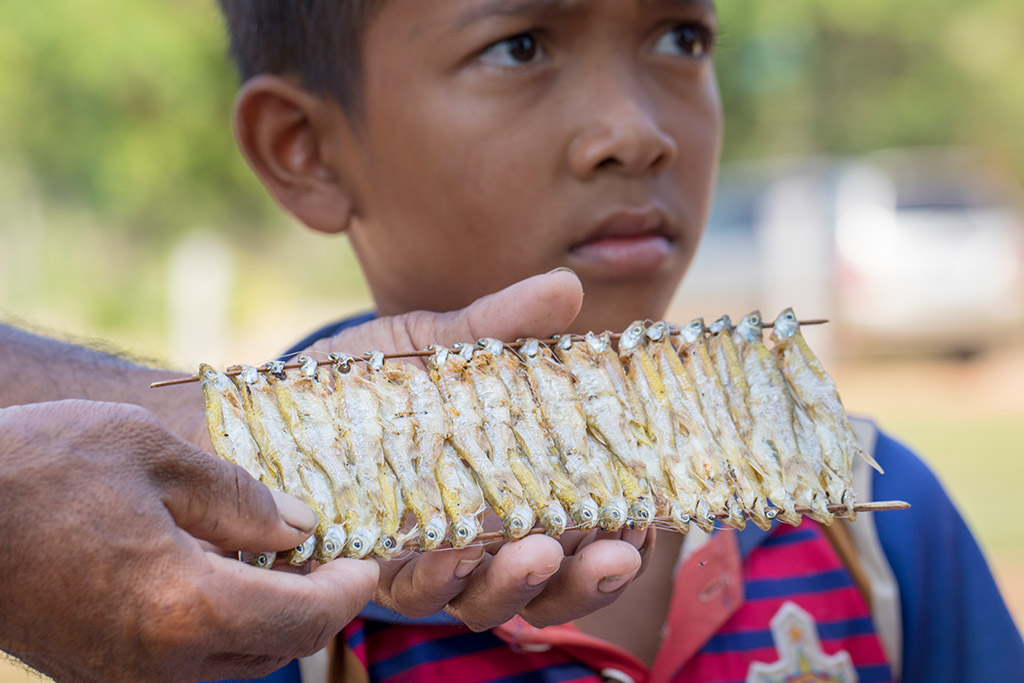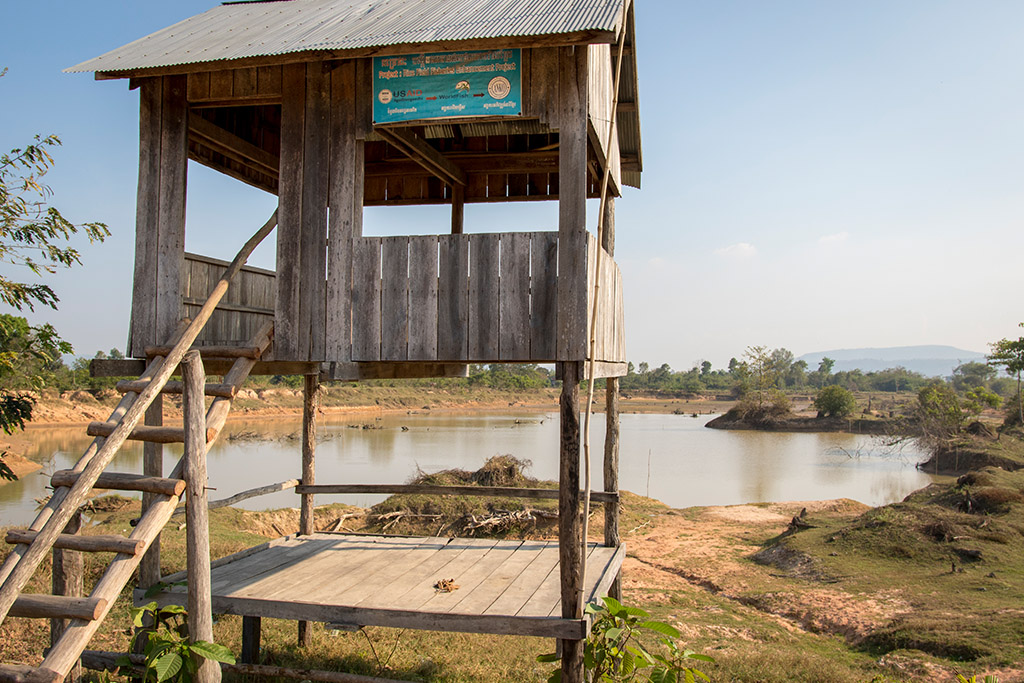-

Scaling up best practices to
secure food for rural Cambodians
WorldFish research shows that sustainable management and good governance by community members can increase the productivity and diversity of rice field fisheries, which are a vital source of food for rural Cambodians.
Rice field fisheries (RFFs)—the fishing that occurs in and around seasonally flooded rice fields—are a vital source of food and income for almost all rural households in Cambodia. But these fisheries, which provide 20–25 percent of the inland fish catch and are home to many species of fish and other aquatic animals, are under threat from overexploitation, habitat loss and environmental degradation.
Through the USAID-funded Feed the Future Cambodia Rice Field Fisheries II (2016–2021) project, the WorldFish-led CGIAR Research Program on Fish Agri-Food Systems (FISH) is working with partners to sustainably increase the productivity of RFFs. The project focuses on Pursat, Battambang, Siem Reap and Kampong Thom provinces around the Tonle Sap Lake, where dependence on RFFs is greatest.
Building on phase I, the project is replicating and scaling up best practices, including efficient water use and promoting the nutritional benefits of consuming fish. By the end of phase II, the project aims to bring 5221 hectares of water bodies under improved natural resource management and to boost annual average fish production in RFFs by 50 kilograms per hectare, equivalent to a total additional output of more than 10,000 metric tons. It is also anticipated that 97,220 people, of which 58,681 are women and children under five, will consume more fish.
Good governance of community fish refuges
Central to achieving these goals is the good governance of community fish refuges (CFRs). CFRs are natural or human-made ponds that hold water throughout the year and provide a dry season sanctuary for brood fish. In the wet season, when water levels rise, the fish migrate out of the CFRs to the rice fields and floodplains to spawn and feed. Fishing is prohibited year round in the CFRs, but rice fields become open access when inundated.
CFRs are governed by committees, which are made up of local volunteers who are elected by the community. WorldFish research shows that strong CFR committees coordinate better with local authorities and agencies, reduce resource-use conflict, embrace innovation and are more likely to raise funds for CFR maintenance and enlargement, resulting in higher yields in rice fields while maintaining fish biodiversity.
“Since the fish refuge was established, I’ve been able to catch fish for my family all year in the canals between the rice fields” – Sok Kiri, Ansor Kdam village, Pursat
During phase I, the project supported 40 CFRs, benefiting 86,372 people. By the end of 2017, the number of CFRs had been significantly increased to 134, which is expected to benefit 569,546 people. Each CFR has established a committee. Through WorldFish partners, committee members receive training in areas such as CFR management, fisheries law, stakeholder engagement, problem analysis and action planning. Ongoing coaching and follow-up visits by project staff ensure that action plans are implemented.
Of the 134 action plans submitted in 2017, 73 contained plans for CFR enlargement. When completed, this work will add 236,018 cubic meters to the 475 hectares already managed by communities.
Making CFRs self-sustaining
The costs are covered by contributions from the households who benefit from the CFRs, funds raised by CFR committees and Commune Council investment, depending on the local situation. The aim is to make the CFRs self-sustaining by the end of the project. Fundraising activities often include placing collection boxes in public places and pagodas, but some CFR committees have identified site-specific opportunities. In 2017, using knowledge gained from study visits organized by the project, the committee of Damnak Kranh CFR in Pursat province introduced an eco-tourism scheme.
Over the three-day Pchum Ben holiday, one of the most important festivals in the Cambodian religious calendar, tourists were invited to visit the CFR, which is a demarcated zone in a larger reservoir, generating USD 1900 in parking and entrance fees. In total, the committee raised almost as much in 2017 as it did during phase I. Across the CFRs, committees raised USD 18,613 in 2017.
Conservation of rice field fisheries helps Cambodia’s poor.
Households around Damnak Kranh have already noticed a difference. “In 2015 and 2016, committee members came to the house every three months to collect the CFR contribution. In 2017, because they had another source of income, they only came once,” says mother-of-six Sok Kiri. “Since the refuge was established, I’ve also been able to catch fish for my family all year in the canals between the rice fields.”
Scaling out best-practice methods like these will ensure that fish, which accounts for 76 percent of animal-source protein intake for households, is available and accessible to all poor and rural families in Cambodia.
Project
Feed the Future Cambodia – Rice Field Fisheries IIDonor:
United States Agency for International Development (USAID)Partners:
Akphivat Neary Khmer Organization,Village Support Group,
Trailblazer Cambodia Organization,
Cambodia Organization for Woman Support,
Fisheries Administration Cambodia
Related sustainable development goals



Tags
Asia,Cambodia, fish, food security, health, nutrition, resilienceImpacts
community fish refuges already supported, of the target 140 by 2021
of action plans submitted contain plans for CFR enlargement, which will add 236,018 cubic meters to the 475 hectares currently managed by communities
raised by committees for CFR management and enlargement work (USD)
Photo credits - WorldFish. Published on 24 July 2018.



